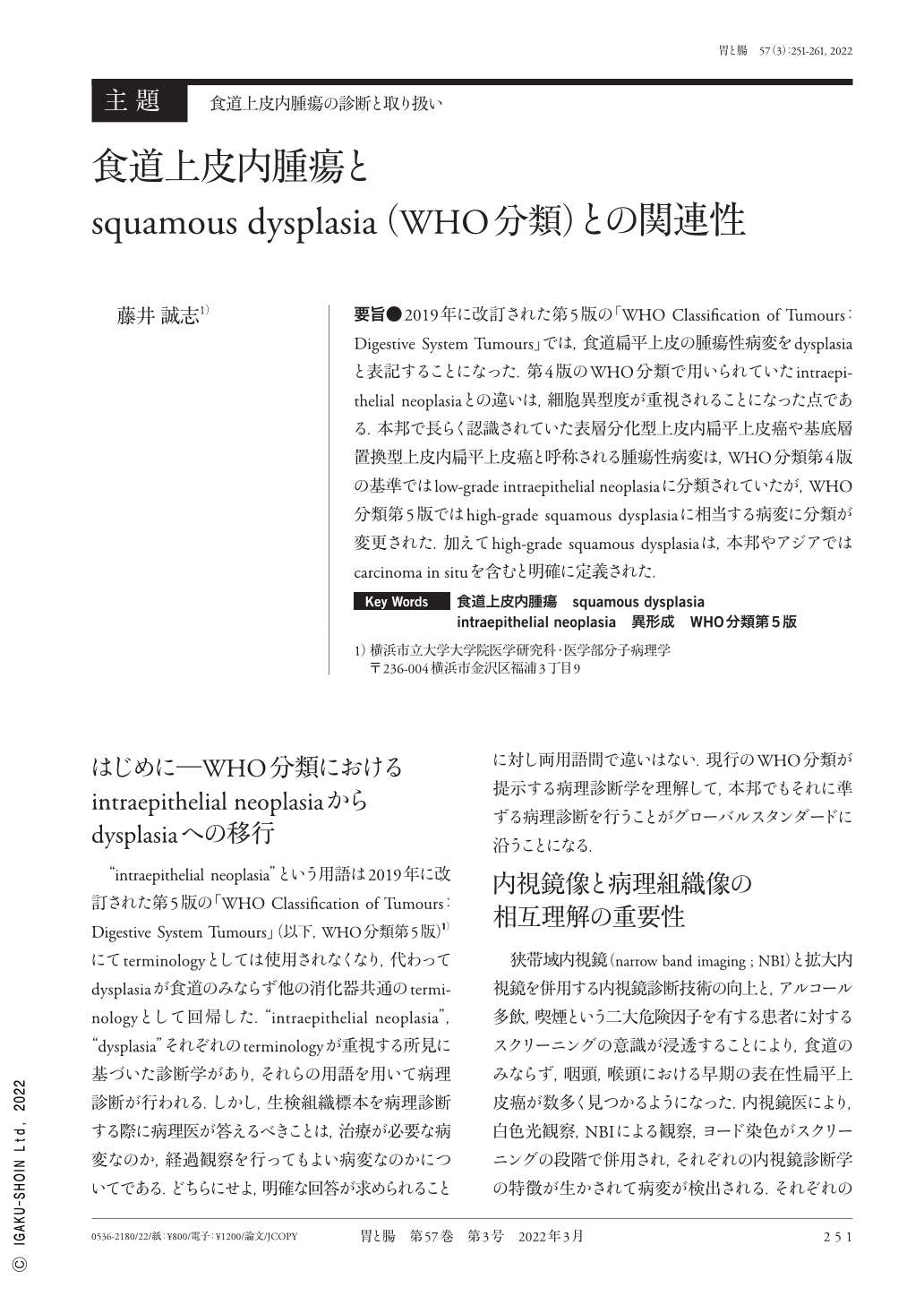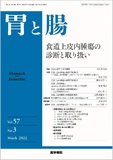Japanese
English
- 有料閲覧
- Abstract 文献概要
- 1ページ目 Look Inside
- 参考文献 Reference
- サイト内被引用 Cited by
要旨●2019年に改訂された第5版の「WHO Classification of Tumours:Digestive System Tumours」では,食道扁平上皮の腫瘍性病変をdysplasiaと表記することになった.第4版のWHO分類で用いられていたintraepithelial neoplasiaとの違いは,細胞異型度が重視されることになった点である.本邦で長らく認識されていた表層分化型上皮内扁平上皮癌や基底層置換型上皮内扁平上皮癌と呼称される腫瘍性病変は,WHO分類第4版の基準ではlow-grade intraepithelial neoplasiaに分類されていたが,WHO分類第5版ではhigh-grade squamous dysplasiaに相当する病変に分類が変更された.加えてhigh-grade squamous dysplasiaは,本邦やアジアではcarcinoma in situを含むと明確に定義された.
The fifth edition of the 2019 WHO(World Health Organization)Classification of Tumours:Digestive System Tumours has used dysplasia as terminology for neoplastic lesions of the squamous esophageal epithelium. Its difference from intraepithelial neoplasia, used in the fourth edition of the 2010 WHO classification, is the further emphasis on the degree of cellular atypia. Superficial differentiated intraepithelial squamous cell carcinoma or basal replacement type intraepithelial squamous cell carcinoma, which has long been recognized as intraepithelial squamous cell carcinoma in Japan and Asia, was classified into low-grade intraepithelial neoplasia based on the criteria of the fourth edition of the 2010 WHO classification ; however, they are classified as high-grade squamous dysplasia in the 2019 WHO classification. Furthermore, high-grade squamous dysplasia has included squamous cell carcinoma in situ in Japan and Asia.

Copyright © 2022, Igaku-Shoin Ltd. All rights reserved.


